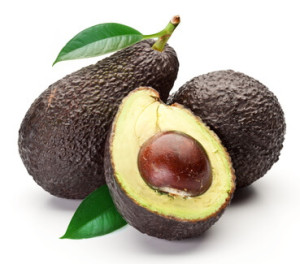The Philippines has signed a working plan with Peru to officially import Hass avocados from the South American country for the first time.
In a statement on October 25, 2025, the Philippines’ Bureau of Plant Industry (BPI) championed the exchange with Peru’s agricultural health department.
The BPI said that the working framework will first target the meeting of phytosanitary stipulations to insure produce quality for consumers.
According to the BPI, this is also an opportunity to diversify the PH’s avocado market’s richness through various import sources.
Pebbly purplish-green Hass avocados (Persea Americana var. Hass) apparently have a wide following locally due to their sweet taste profile.
Peru’s entry signs off months of bilateral technical deliberations, with the Department of Agriculture (DA) finally allowing in imports for diversity reasons.
Peru is among the largest growers of the cultivar in the southern Hemisphere, besides being among the nations that pioneered avocado cultivation.
Acreage under Hass in Peru grew sevenfold in the 2007-21 period from 5,000 hectares (ha) to 65,000 ha, per the Hass Avocado Board.
Do Hass avocados Grow in the Philippines?
The Philippines in its part already cultivates Hass in places like Bohol in the Central Visayas, the Cagayan Valley and Southern Luzon.
‘Abokado,’ as residents call it, is a relatively new fruit in the country, having arrived as late as the 1890s.
Today, many varieties exist that include Hass which grows in Mindanao in the country’s south, particularly in Davao and Bukidnon.
The Philippines also began exporting the matured variety to South Korea in September 2023 and to Japan in November 2024.
Although this cultivar commands generally higher prices in Asia than elsewhere, its use in Asian salads has insured its market longevity there.
Hass avocados have crossed many borders including Peru and the Philippines since California pioneered them from the mid-1920s. Today the cultivar makes up the bulk of the global commercial avocado market scene. And as the statistics below point out, Peru is a major producer.
Peru Avocado Production Statistics
Peru was one of the earliest cradles of avocados in as early as the 1400s when the conquistadors brought them here. By 1995, the country was averaging a production of 100,000 tonnes per annum for mostly local consumption. But by 2023, the fruit had become the third highest agricultural export, worth US$1.065 billion or 7.1% of the GDP.
The Hass cultivar constitutes the bulk of the commercial avocado output in the South American country. As the following stats from the FAOSTAT show, their production was relentless in the early 2020s.
| Year | Production [tonnes] |
| 2023 | 982,558 |
| 2022 | 861,294 |
| 2021 | 776,651 |
| 2020 | 672,232 |
| 2019 | 571,992 |
How big is the Hass avocado area in Peru?
In 2024, the acreage under Hass in Peru was at 76,600 ha, per the Hass Avocado Board. A rival official statistic by the FAOSTAT puts the total avocado area a little lesser, per the following table but one:
| Year | Hass Acreage [Ha] |
| 2024 | 76,600 |
| 2023 | 76,100 |
| 2022 | 75,600 |
| 2021 | 72,300 |
| 2020 | 66,900 |
| Year | Total Avocado Acreage [Ha] |
| 2024 | 47,905 |
| 2023 | 51,241 |
| 2022 | 55,382 |
| 2021 | 66,152 |
| 2020 | 63,078 |
Which of Peru’s regions boast the most area under Hass?
As of 2024, the capital Lima had 13,699 ha under avocados (mainly Hass), followed by southwest Peru’s area of Ica with 13,261 ha.
